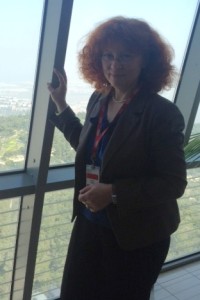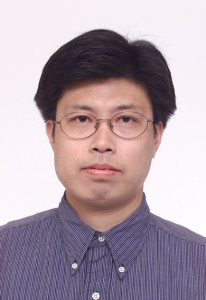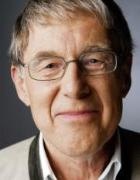Cyperphysical systems (CPS) are on the horizon to challenge the way we see and develop computer systems. CPS provide the integration of embedded computing, real-time computing, distributed computing, parallel computing, mobile computing, and server systems, resulting in completely new application domains. On one side the arise of CPS is just the natural consequence of various incremental improvements of enabling technologies. But from the software engineering side it creates big challenges for software engineering. CPS will result in significant rise of system complexities. At the same time there are serious security and safety challenges as it requires to combine subsystems with closed-world assumptions and those with open-world assumptions, requiring new interfacing solutions. In this talk we present the research towards the development of a programming model that is aimed to withstand the CPS challenge. This programming model will provide support for mixed-criticality systems and adaptability. As a fundamental change in software engineering we present a computing model that unifies the non-real time, soft-real time and hard real-time paradigms. An important mechanism included in this computing model are tolerance ranges, which allow to adapt the system when necessary. Such adaptation scenarios include fault-tolerance with reconfiguration and optimisation of resources like processing time or power consumption.
Adaptive Media Streaming – State Of The Art and Future Challenges
12. Juni 2014
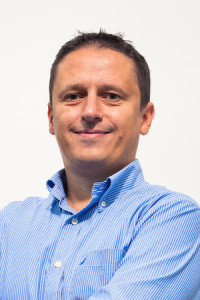 Ass.-Prof. Dipl.-Ing. Dr. Christian Timmerer | Mi, 25.06.2014 | 17:00-18:30, HS 2
Ass.-Prof. Dipl.-Ing. Dr. Christian Timmerer | Mi, 25.06.2014 | 17:00-18:30, HS 2
Abstract: Adaptive media streaming has entered our daily lives and we see large-scale deployments within heterogeneous environments. State of the art techniques adopt a client-centric, pull-based approach which is deployed over the top of the existing delivery infrastructure. Interestingly, this kind of approach turns out to be very efficient and scales very well thanks to efficient audio-visual coding formats, adaptive client behavior, and re-use of already deployed infrastructure such as servers, proxies, caches, and content distribution networks (CDNs). This talk will review past and present adaptive media streaming approaches and present dynamic adaptive streaming over HTTP (DASH) in detail. At the end of the talk we will present and discuss future challenges in this domain.
This talk is part of / dieser Vortrag ist Teil der Ringvorlesung Informatik und Informationstechnik SS2014.
Posted in TEWI-Kolloquium Kommentare deaktiviert für Adaptive Media Streaming – State Of The Art and Future Challenges
Video analysis and recognition for Medical and Healthcare application
4. Juni 2014
Since recent decade, the development of high quality acquisition devices for medical applications yielded migration of traditional video analysis techniques into medical domain. One of the fondamental probelms in Video analysis is motion estimation. Amongst the approaches which have been developped for this purpose, the robust motion estimators are of special interest. Initiated in the works by Black and Anondan, they are now more and more penetrating in the medical imaging and analysis. In the first part of the talk we will present a robust motion estimator from primary optical flow. Developed on the basis of robust estimator of Tukey, it allows for compensation of global motion in a video sequence. The coherence of motion parameters allow for segmenting of video sequences for the primary video summarisation. The results will be demonstrated on endoscopic videos. In the second part of the seminar we will be interested in primarily optical flow estimation on MRI sequences of beating heart. Here the motion compensation will be presented for MRI – guided thermotherapy, where precise motion compensation is needed for correction of temperature maps. Finally, we will give some insights in modelling of visual attention for wearable video acquisition set-ups in the studies of Instrulmental Activities of Daily living of people with dementia for egocentric scenes interpretation.
CV :
Jenny Benois-Pineau is a distinguished professor of Computer science at the University Bordeaux, France and chair of Video Analysis and Indexing research group in Image and Sound Department of LABRI UMR 58000. She is also a deputy scientific director of theme B of French national research unity GDR CNRS ISIS. Her topics of interest include image and video analysis and indexing, motion analysis, content description and machine learning. She is the author and co-author of more than 120 papers in international journals, conference proceedings, book chapters. She has tutored an co-tutored 20 PhD students and 19 research masters. She is associated editor of EURASIP Signal Processing:Image Communication, Elsevier, Multimedia Tools and applications, Springer, She has served in numerous program committees in international conferences and workshops: ACM MM, CIVR, CBMI, AMR, IPTA, SAMT, ECMCS…
She has served as expert for European Commission since FP4 and she is a member of Multimedia Commission of French Ministry of National Education. She has been coordinator or leading researcher in international research projects Platon, Balaton, IP XMedia, Dem@care, French representative in COST292 European action, national research projects ANR and numerous projects with French industrial companies. She gave invited lectures at the universities of Sussex (GB), UPC, UAM (Spain), UNAM (Mexico), UNC at Chapel Hill, CMU, NJIT, Brooklynn Polytechnic (USA), Firenze (Italy), Vesprem (Hungary).
Posted in TEWI-Kolloquium Kommentare deaktiviert für Video analysis and recognition for Medical and Healthcare application
Achieving better video understanding in two different perspectives
1. Juni 2014
Undoubtedly, the video data is becoming more and more important in a lot of engineering fields, and also in the daily life of human beings. In this talk, two approaches in two different perspectives help achieve the better and deeper understanding of the video data, are introduced, namely, the video key frame selection and its visualization, and the trajectory clustering and visualization. Firstly, A new technique for key frame extraction and 3D visualization, for the sake of video browsing and exploration, is presented. Our proposed approach for key frame selection makes use of the information theory metrics and the f-divergences for calculating the frame-by-frame distance to segment the video clip and then to obtain the key frames. As for the visualization, a 3D interactive interface to display the key frames and their related comprehensive information to provide an expressive exploration of key frames as well as their video contexts is presented. A visualization utility, killTool, used for interactively removing the possible redundant key frames is also developed.
Secondly, a new method for the trajectory clustering and visualization is demonstrated, as an effective way to help observe and understand the (video) motion trajectory data. The main contributions by the proposed method involve the hierarchical clustering in consideration of both speed and direction properties of a trajectory, the introduction of the uncertainty for the updating trajectories based on their speed and direction attributes, and the graphical visualization on the clustered trajectories. In the end, some future considerations are highlighted and discussed.
Short bio:
Qing Xu is a full professor at the School of Computer Science and Technology at Tianjin University, China, where he is also the Director of the Information Technology Research and Civil Aviation Applications Laboratory. He received the M.S. and Ph.D. degrees, respectively in 1998 and 2001, in computer science and technology from Tianjin University, China. His skills include diverse aspects of the information technology, from theory to practice, thanks to acting different roles in different working situations. His research activities cover interdisciplinary fields related to visualization, visual analytics and computer graphics, digital image/video processing, information theory and fuzzy techniques. He has been leading national, international cooperation and industrial research projects, and teaching courses in the technical areas mentioned above. He also serves for the program committee and/or reviewer of a number of journals and conferences in computer graphics, virtual realities, and image/video processing.
Currently, his research interests are in Visual Analytics on Video Data, Analysis of (Video) Motion Trajectories, Monte Carlo based Realistic Image Synthesis, and information theoretic based computational aesthetics.
Posted in TEWI-Kolloquium Kommentare deaktiviert für Achieving better video understanding in two different perspectives
Wohl temperiert in guter Stimmung! Plauderei zu Mathematik und Musik mit Hörbeispielen
1. Juni 2014
Abstract: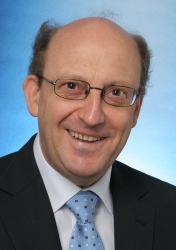
Weshalb klingen Oktaven völlig rein und können Quinten beim Stimmen von Streichinstrumenten absolut richtig austariert werden? Weshalb werden kleine Sekunden oder das Drei–Ganzton–Intervall (Tritonus) in der Musik als Dissonanzen wahrgenommen? Sind das nur subjektive, beim Hören abendländischer Musik erlernte Empfindungen oder stecken dahinter allgemeine Prinzipien? In diesem Beitrag soll verdeutlicht werden, dass anhand der natürlichen Obertonreihe mathematisch begründet ist, weshalb wir Intervalle musikalisch als konsonant oder dissonant empfinden, weshalb Dur– und Moll–Tonleiter gerade so sind, wie sie heute gebräuchlich sind und weshalb im Laufe der Musikgeschichte die Oktave in 12 Halbtonschritte eingeteilt wurde. Die Obertonreihe ist jedoch mit unserer Empfindung der Tonhöhe als Logarithmus der Schwingungsfrequenz nicht in Einklang zu bringen, was dazu führt, dass ein widerspruchsfreies musikalisches Stimmungssystem nicht existieren kann. Einige historische Kompromissvorschläge zur Stimmung von (Tasten–)Instrumenten werden vorgestellt und verglichen.
CV:
Johannes Huber studierte Elektrotechnik an der Technischen Universität München und erwarb 1977 das Diplom. Er wurde 1982 zur Dr.-Ing. promoviert und erhielt 1991 den Titel Dr.-Ing. habil. mit einer Monographie zur Trelliscodierung. Seit 1991 ist er Professor für Nachrichtentechnik und Leiter des Lehrstuhls für Informationsübertragung an der Friedrich-Alexander-Universität Erlangen-Nürnberg. Von 2007 bis 2009 leitete er deren Technische Fakultät als Dekan.
In der Forschung ist Johannes Huber auf den Gebieten digitale Übertragung, Informations- und Codierungstheorie, codierte Modulation, Entzerrungs- und Detektionsverfahren, MIMO- Übertragungsverfahren etc. aktiv. Er hat zwei Monographien verfasst und ist Autor und Co-Autor von ca. 320 wissenschaftlichen Beiträgen.
Publikationen, die er verfasst bzw. mit verfasst hat, wurden mit dem Preis der deutschen informationstechnischen Gesellschaft in den Jahren 1988, 2000 und 2006 ausgezeichnet. 2004 erhielt er den Innovationspreis der Vodafone-Stiftung für Mobilfunk. In den Jahren 2003 und 2010 wurde ihm der EEEfCOM Innovationspreis verliehen.
Bislang wurden unter der Betreuung von Prof. Huber 41 Promotionen abgeschlossen, 10 seiner ehemaligen Doktoranden sind inzwischen selbst Professoren an namhaften Universitäten und Hochschulen.
Prof. Huber ist Fellow of the IEEE, Corresponding Fellow of the Royal Society of Edinburgh und ordentliches Mitglied der Bayerischen Akademie der Wissenschaften.
Posted in TEWI-Kolloquium Kommentare deaktiviert für Wohl temperiert in guter Stimmung! Plauderei zu Mathematik und Musik mit Hörbeispielen
Smart Sensors and Actuators – An der Grenze zwischen digitaler und realer Welt
29. Mai 2014
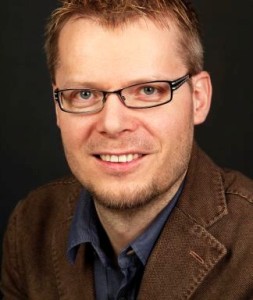 Univ.-Prof. DI Dr. Hubert Zangl | Mi, 11.06.2014 | 17:00-18:30, HS 2
Univ.-Prof. DI Dr. Hubert Zangl | Mi, 11.06.2014 | 17:00-18:30, HS 2
- Was verbirgt sich hinter den Begriffen „Smart Sensors“, „Smart Actuators“ und „Smart Systems“?
- Welche Möglichkeiten eröffnen sich durch den Einsatz von Smart Systems?
- Welche Herausforderungen bringen Smart Systems aus der Sicht der Sensor- und Aktortechnik mit sich?
- Welche Methoden können zur Bewältigung der Herausforderungen eingesetzt werden?
- Anwendungsbeispiele
Kurzfassung: Sensoren und Aktuatoren stellen die Schnittstellen zwischen der „realen physikalischen” und der elektrischen/elektronischen (und digitalen) Welt dar. Nicht zuletzt aufgrund der stets steigenden Komplexität technischer Systeme nehmen nicht nur die Anzahl und die Aufgaben dieser Komponenten zu, sondern auch die Anforderungen an diese hinsichtlich Genauigkeit, Zuverlässigkeit und Sicherheit. Daneben sind auch zahlreiche weitere Anforderungen wie geringer Platz- und Energiebedarf oder geringe Kosten zu erfüllen.
Um diesen hohen Anforderungen gerecht zu werden, werden oftmals „intelligente Sensoren“ eingesetzt, die neben einem (oder mehreren) Primärsensor(en) und -Aktuator(en) auch analoge und digitale Signalaufbereitung, Hard- und Software für Signalverarbeitung und Eigendiagnose sowie drahtgebundene oder drahtlose Kommunikationseinrichtungen aufweisen. Mitunter beinhalten derartige Systeme eigene „Kraftwerke“, um sich aus der Umgebung mit Energie zu versorgen („Energy Harvesting“) und somit völlig autark arbeiten zu können. Für den Entwurf derartiger Systeme werden Methoden benötigt, die es den Designern ermöglichen, die Komplexität zu beherrschen.
In dem Vortrag werden Ansätze für den modellbasierten Design- und Optimierungsprozess von intelligenten Sensoren und Aktuatoren vorgestellt. Dabei spielen insbesondere die Themen Messunsicherheit, Zuverlässigkeit und Sicherheit eine große Rolle. Ein wesentlicher Aspekt ist die Berücksichtigung möglicher Störeinflüsse (Herstellungstoleranzen, Rauschen, Elektromagnetische Störer, Defekte, …) und deren Auswirkung während der gesamten Entwurfphase. Diese Vorgehensweise führt einerseits zu robusten Designs und erlaubt andererseits eine frühzeitige Erkennung von kritischen Faktoren, wodurch Fehlentwicklungen vermieden werden können.
This talk is part of / dieser Vortrag ist Teil der Ringvorlesung Informatik und Informationstechnik SS2014.
Posted in TEWI-Kolloquium Kommentare deaktiviert für Smart Sensors and Actuators – An der Grenze zwischen digitaler und realer Welt
Rückblick: Innovating Enterprise Innovation [Video][Slides]
21. Mai 2014
Der Rückblick zum TEWI-Kolloquium von Michele Missikoff am 15.05.2014 beinhaltet die Videoaufzeichnung sowie die Folien:
Video
[iframe height=“350″ src=“http://video.aau.at/video.php?video=ftf_missikoff.mp4″]
Slides
[iframe src=“http://www.slideshare.net/slideshow/embed_code/34944790″ width=“476″ height=“400″ frameborder=“0″ marginwidth=“0″ marginheight=“0″ scrolling=“no“]
Abstract
Innovation is one of the key enablers for European enterprises to compete in global markets. The term ‘innovation’ is constantly used in speeches of managers, politicians, public administrators. However, in the large majority of cases, the term is used as a generic ‚place holder‘, a sort of container whose actual content is left to the intuition. For this reason it is important to deeply elaborate, specifically on the notion of Enterprise Innovation, to better understand the essence and meaning of innovation.
Innovation stems from a virtuous mix of intuition, creativity, and a solid background knowledge. Each innovation endeavour has its own characteristics, largely different from previous experiences. It falls in the category of ‘wicked problems’, i.e., problems difficult to solve because of incomplete, fuzzy, changing requirements. Nevertheless, there are recurring patterns and it is possible to conceive systematic methods, and supporting information systems, to promote and manage innovation avoiding the risk to close it in a ‘cage’, risking depressing the fundamental creativity and fantasy. This talk will present an innovative framework for enterprise innovation that includes a methodology and an innovation management platform which is based on an generic behavioural pattern (i.e., independent of the industrial sector), a strong knowledge orientation, and an innovation monitoring system funded on a number of Key Performance Indicators, to constantly keep the progress of the innovation project under control.
Short CV:
Michele Missikoff – Founder and Scientific Advisor of the Laboratory of Enterprise and Knowledge Systems, and past Director of Research, at IASI (Institute for Systems Analysis and Informatics) of the CNR, Italian National Research Council; past director of the Center for Enterprise Knowledge at Free University of International Studies of Rome (UNINT) where he teaches Enterprise Information Systems. He is currently the Scientific Coordinator of the European Project BIVEE. Recently, he coordinated the European Task Force for the FInES (Future Internet Enterprise Systems) Research Roadmap 2025, in the DG INFSO of the European Commission. He managed and participated in more than 20 European and national projects. He has a long-time research experience in databases, knowledge representation, and semantic technologies. He served in resp. chaired Program Committees of primary international conferences such as CoopIS, VLDB, CAiSE, and EDBT and in the editorial boards of international journals,. He is co-founder and past president of the international EDBT Foundation. He authored more than 150 scientific papers.
Posted in TEWI-Kolloquium Kommentare deaktiviert für Rückblick: Innovating Enterprise Innovation [Video][Slides]
Interactive debugging of knowledge bases
15. Mai 2014
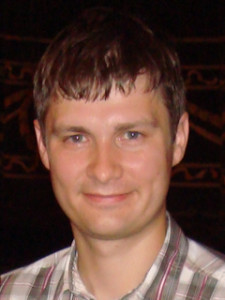 Ass.-Prof. Dr. Kostyantyn Shchekotykhin | Mi, 28.05.2014 | 17:00-18:30, HS 2
Ass.-Prof. Dr. Kostyantyn Shchekotykhin | Mi, 28.05.2014 | 17:00-18:30, HS 2
Abstract: Effective debugging of knowledge bases is an important prerequisite for their broad application, especially in the areas that rely on everyday users which create and maintain knowledge bases such as the Semantic Web. In many cases users have different views of a domain, i.e. which knowledge about the domain has to be captured in a knowledge base and how it should be represented. Inappropriate usage of terms together with natural complications when formulating and understanding logical descriptions may result in faulty knowledge bases.
Recent approaches to debugging of knowledge bases use diagnosis methods to identify causes of the faults. In most debugging scenarios there are multiple explanations for a fault and, therefore, many diagnoses can be found by a debugger. In this case, localization of a fault, i.e. selection of the target diagnosis, must be done manually.
In this talk we present an interactive debugging approach which automatically identifies the target diagnosis by performing a sequence of queries to a user. That is, the system uses discrepancies between different fault explanations to generate a query to a user: whether or not some logical sentence must be implied by a knowledge base a user is going to create. Due to an impossibility of a user to provide answers to all existing queries, the debugger can use a variety of query selection strategies applied in active learning and select the most informative ones. This allows to minimize the number of queries required to localize a fault and simplifies debugging of knowledge bases in general.
This talk is part of / dieser Vortrag ist Teil der Ringvorlesung Informatik und Informationstechnik SS2014.
Posted in TEWI-Kolloquium Kommentare deaktiviert für Interactive debugging of knowledge bases
Vom TU-Absolventen zum VP – „Lessons Learnt“ aus 34 Jahren in der Industrie
6. Mai 2014
Erfolgsfaktoren und Tipps für eine Karriere in der Industrie mit anschließender Diskussion.
Vortragende(r)
Ernst-J. Feicht (Jahrgang 1942) studierte Physik an den Technischen Universitäten München und Berlin, Promotion 1970. 1971 trat er in die Siemens AG ein. Bis 1979 entwickelte er dort Software für verschiedene Anwendungsbereiche.Von 1975 bis 97 hielt er öffentliche Seminare über Software Engineering und Projekt Management. 1996 lud ihn die Bundeswehr-Universität dazu ein, Vorlesungen über diese Themen zu halten. Wenig später folgte die TUM, dort seit 2002 Honorarprofessor. Beim MSCE arbeitet er von Beginn an mit. Von 2000 bis 2002 war im Programm der Bayerischen Eliteakademie vertreten. Seit 2005 ist er für die Carl-von-Linde Akademie aktiv.
Posted in TEWI-Kolloquium Kommentare deaktiviert für Vom TU-Absolventen zum VP – „Lessons Learnt“ aus 34 Jahren in der Industrie
Innovating Enterprise Innovation
6. Mai 2014
Abstract
Innovation is one of the key enablers for European enterprises to compete in global markets. The term ‘innovation’ is constantly used in speeches of managers, politicians, public administrators. However, in the large majority of cases, the term is used as a generic ‚place holder‘, a sort of container whose actual content is left to the intuition. For this reason it is important to deeply elaborate, specifically on the notion of Enterprise Innovation, to better understand the essence and meaning of innovation.
Innovation stems from a virtuous mix of intuition, creativity, and a solid background knowledge. Each innovation endeavour has its own characteristics, largely different from previous experiences. It falls in the category of ‘wicked problems’, i.e., problems difficult to solve because of incomplete, fuzzy, changing requirements. Nevertheless, there are recurring patterns and it is possible to conceive systematic methods, and supporting information systems, to promote and manage innovation avoiding the risk to close it in a ‘cage’, risking depressing the fundamental creativity and fantasy. This talk will present an innovative framework for enterprise innovation that includes a methodology and an innovation management platform which is based on an generic behavioural pattern (i.e., independent of the industrial sector), a strong knowledge orientation, and an innovation monitoring system funded on a number of Key Performance Indicators, to constantly keep the progress of the innovation project under control.
Michele Missikoff – Founder and Scientific Advisor of the Laboratory of Enterprise and Knowledge Systems, and past Director of Research, at IASI (Institute for Systems Analysis and Informatics) of the CNR, Italian National Research Council; past director of the Center for Enterprise Knowledge at Free University of International Studies of Rome (UNINT) where he teaches Enterprise Information Systems. He is currently the Scientific Coordinator of the European Project BIVEE. Recently, he coordinated the European Task Force for the FInES (Future Internet Enterprise Systems) Research Roadmap 2025, in the DG INFSO of the European Commission. He managed and participated in more than 20 European and national projects. He has a long-time research experience in databases, knowledge representation, and semantic technologies. He served in resp. chaired Program Committees of primary international conferences such as CoopIS, VLDB, CAiSE, and EDBT and in the editorial boards of international journals,. He is co-founder and past president of the international EDBT Foundation. He authored more than 150 scientific papers.

